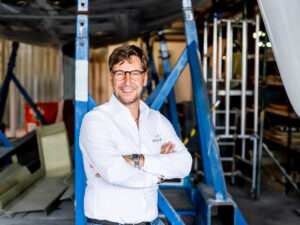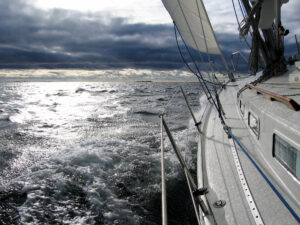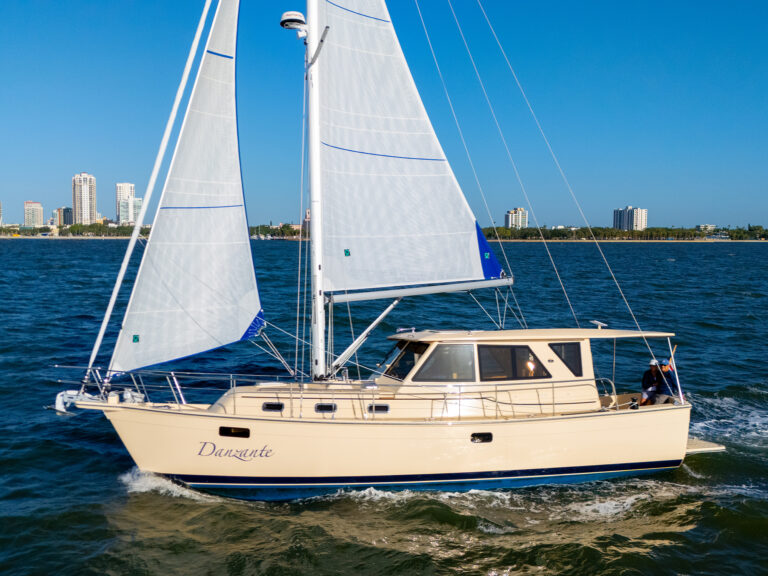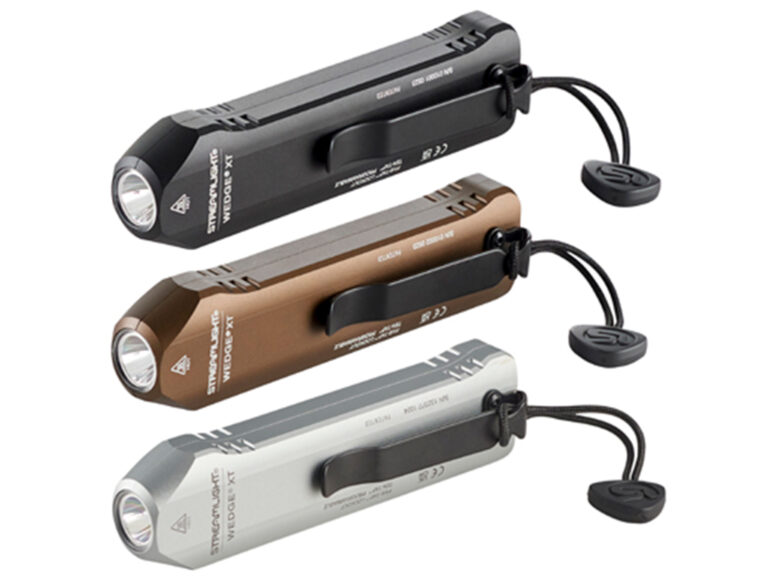
Del Viento- mainsail
In conversation with a landlubbing friend a couple weeks ago, I offered that I am not a very skilled sailor. Oh, did she laugh. I insisted, “Really, I can haul the sails up and get the boat someplace, but when it comes to sail trim and such, there is a lot I don’t know.” I don’t think she really believed me, or thought my assertion was a display of false modesty.
It occurred to me that many non-sailing folks—and maybe day sailors—assume that anyone who casts off in a well-provisioned blue water boat is at the top of their sailing game, that they have tens of thousands of miles under their keel and are able to squeeze the last tenth of a knot of boat speed out of any point of sail.
This past week, I came across a classic DVD stowed aboard that I’d never watched: _The Shape of Speed_. In it, Lowell North and his friends (a Who’s Who of sailing luminaries) go over strategies for trimming the mainsail, headsail, and spinnaker. The audio is clear and the supporting video footage is excellent. The onboard presentation is calm and matter-of-fact, and often using the words basic and simple. I don’t think I understood 50% of what they said.
When we raise the main aboard Del Viento, I’ll trim it using the mainsheet and traveler car—not using any proscribed formula, just doing what I need to do each time to position the boom for the point of sail, eliminate any sail flapping, and make sure that the shape is pleasing to my eye.
According to The Shape of Speed, a sailor should move the mainsail’s point of maximum draft (measured by a percentage of the chord length) by taking in the outhaul, easing the baby stay, tightening the running back stay, and adjusting the cunningham so that it is not too slack and not too tight. Then one should sight the top batten from the edge of the boom and use the mainsheet to address too little or too much twist. Then it’s best to use the leech telltales for more precise trim. Oh, and “in puffy conditions, the traveler must be tended constantly.”
Whew! Where do I put my beer while I do all of this?
I wondered how many people with cruising dreams are needlessly intimidated by exacting sailing instructors or videos like The Shape of Speed? How many cruising dreams are cast aside when the sailing reality seems too overwhelming?
There is nothing wrong with knowledge, and for skillful sailors—racing sailors for sure—all the information related in The Shape of Speed is second nature—and they go fast. In fact, the more of this information any cruising sailor knows and can put to use, the better. But it just isn’t necessary to make a passage, or to cross an ocean. Like Del Viento, many cruising boats don’t even have much of the equipment aboard to effect the basic sail trim described by Lowell North and his friends (no adjustable back stay or second car on the genoa track to adjust sheet leads).
To the hopeful cruiser I say: don’t be daunted by too much information. Like many pursuits, sailing can be as simple or as complicated as you want it to be. My instructions for someone with cruising dreams begin with learning the basics of theory and terminology (even from a book, like I did) and then:
• Sail in all types of conditions throughout the year (warm weather, cold weather, light air, during small craft warning, with sails reefed, in the rain, in the fog, at night, overnight) until you feel comfortable heading out. Because, as Capt. Ron said, “If anything’s gonna happen, it’s gonna happen out there.”
• Practice anchoring and docking.
• Know your boat’s systems and have the tools and spares aboard to resolve the common problems.
• Reef early, try and stay within your comfort zone, and don’t push your boat like a Volvo or Velux racer—ultimately your judgment will develop.
And that’s all it takes to be as competent as me and most of the cruising folks I know. You will continue to gain experience with each mile that passes under your keel and each unexpected event.
And be open to the unexpected events. They’ll come in time—and maybe scare the heck out of you when they do—but you’ll learn from them, exactly what you need to learn. With experience, you’ll gain the confidence to expand your comfort zone and be in a position for more challenging unexpected events, thereby further increasing your experience and confidence. You may never learn precisely where your mainsail’s maximum draft should be, or how to get it there, but you’ll be ready to cross oceans.
–MR
_I__n our twenties, we traded our boat for a house and our freedom for careers. In our thirties, we slumbered through the American dream. In our forties, we woke and traded our house for a boat and our careers for freedom. And here we are. Follow along at _








